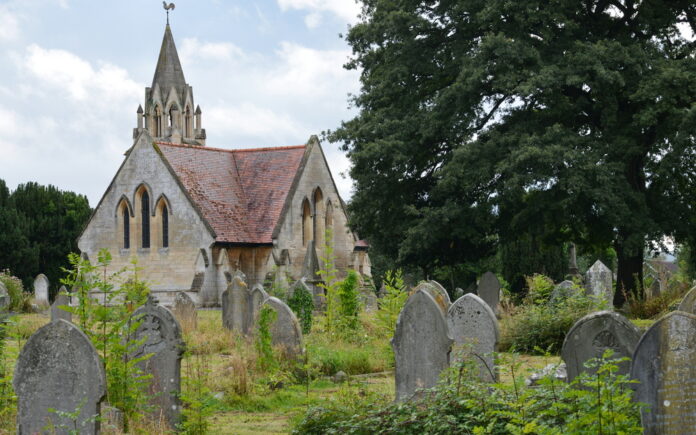In the U.S., life expectancy is nearly six years older for women than it is for men. And this happens throughout the world. Women’s higher life expectancy is attributed to a number of factors, including men’s greater risk of heart disease due to a lack of estrogen, the fact that men take bigger risks, are more likely to smoke and drink and drive, and that men are more likely to die by suicide.
These are just a few of the reasons why females tend to outlive males. And it’s also true of other species like birds, deer, and whales. But new research published in Science Advances shows that in Medieval England, this wasn’t the case. Researchers found that men and women lived to around the same ages, and life expectancy wasn’t extended for women.
During the Medieval Period, life expectancy was much lower than it is today, at around 32 years old. Some people lived into their 40s and 50s, but few lived into old age. Still, women would have been expected to have a longer stretch.
Analyzing Markers of Health in the Dead
For this study, researchers used a skeletal collection of specimens curated at the Museum of London to uncover patterns of health, says lead study author Samantha L. Yaussy, an anthropologist at James Madison University in Harrisonburg, Virginia.
“Lesions on the skeleton would have recorded stressful health events, for example, those that occurred during childhood, like a bad bout of disease or nutritional deprivation,” she says.
If an individual went through a famine or a plague during their lifetime, lesions or outgrowths on the skeleton or the teeth would show this and indicate a person’s frailty.
“It’s a permanent record that you went through something stressful in your life,” Yaussy says. These stressors can and did shorten lifespan.
Grooves on the teeth, for example, can be formed by stress on the body that’s substantial enough to cause your body to stop forming enamel so that a certain portion of your teeth never form. This can be caused by diseases like scurvy, smallpox, and nutritional deprivation. Other skeletal indicators include trauma, like a violent encounter or an accident. Infection can also show up on a person’s skeleton because it can disturb the external surface of the bone.
However, the larger question becomes, how can researchers conceive the length of life from skeletons? Unlike assessing frailty in life, it becomes much harder to do when a person is no longer alive. For this study, researchers, known as bioarchaeologists, conceived of frailty and likelihood of death by looking at frailty in skeletal remains to establish whether an individual had an increased risk of death based on skeletal indicators, says Yaussy. Put more simply: Would they have been frail in life?
Life Expectancy During the Medieval Period
Women lost their life expectancy edge during the Medieval Period because of cultural reasons, says Sharon DeWitte, study author and a biological anthropologist at the University of Colorado Boulder. Women in most societies have longer life expectancies, so this evening out could only be blamed on something cultural.
Medieval England — which lasted from 1066 to 1485 — was a patriarchal society with a preference for male heirs, says DeWitte.
“This shapes who gets certain foods and how resources are spread among children at crucial points in their development,” she says.
And though medicine was primitive by our standards, patriarchy still would have shaped who received it and who did not. Women were also more likely to be on the frontlines caring for people with communicable diseases, which made them more likely to come down with an infection.
“These are reasonable inferences to make based on what we know about that societal structure,” says DeWitte.
It seems that Medieval England was not a great time to be a woman, which is evident in life and in death, and it points to some important clues about the role that patriarchy can have on life expectancy.
Article Sources:
Our writers at Discovermagazine.com use peer-reviewed studies and high-quality sources for our articles, and our editors review for scientific accuracy and editorial standards. Review the sources used below for this article:
Sara Novak is a science journalist based in South Carolina. In addition to writing for Discover, her work appears in Scientific American, Popular Science, New Scientist, Sierra Magazine, Astronomy Magazine, and many more. She graduated with a bachelor’s degree in Journalism from the Grady School of Journalism at the University of Georgia. She’s also a candidate for a master’s degree in science writing from Johns Hopkins University, (expected graduation 2023).
Source : Discovermagazine






